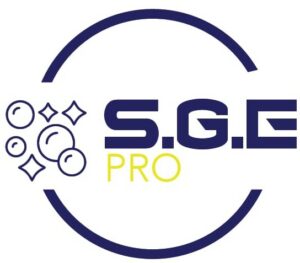This broad accessibility helps organizations reach a wider audience with their applications. SQA can be addressed in several different ways and cover the entire software development process. It is critical that end users and system maintainers participate regularly in testing.
- When the requirements are fully understood and the component-based construction approach is adopted then the RAD model is used.
- They can suggest alterations, changes, or even new ideas that can solve problems as they arise.
- The client provides a vision for the product, and in collaboration with other stakeholders, research is conducted to finalize requirements with each stakeholder’s approval.
- For a RAD platform, software quality and speed are more important than meeting deadlines.
- That being said, one of the key principles of RAD is the ability to change requirements at any point in the development cycle.
- Both phases (2 & 3) prototyping and construction/feedback continue until a final product is produced that is in line with the clients requirements and are developed in the most suitable way.
- One of the most compelling advantages of low code development is its ability to expedite the application development process.
RAD can be extremely expensive, which makes it infeasible for companies with smaller budgets for their software requirements. RAD is also highly dependent on quick and accurate feedback, which is difficult when you can’t get in touch with your end-users at the drop of a hat. For a RAD platform, software quality and speed are more important than meeting deadlines. While it’s faster and cheaper to develop software using a rapid application development methodology, it’s not perfect. Rapid application development methods reduce control and restrictions, offering greater flexibility during prototyping and development. Adequately managing flexibility and volatility within the scope of a project may cause complications for larger applications.
Documentation for Software and IS Development
This is the meat and potatoes of the RAD methodology—and what sets it apart from other project management strategies. During this phase, clients work hand-in-hand with developers to ensure their needs are met at every step in the design process. It’s almost like customizable software development where the users can test each prototype of the product, at each stage, to ensure it meets their expectations. RAD involves a collaborative approach where developers work closely with stakeholders to identify requirements, design, prototype, develop, and test the software. The process is iterative, meaning that feedback from the client is used to refine the prototype until the final product is delivered. RAD is particularly useful for projects with fast-changing requirements and where time-to-market is critical.

But if you’re willing to consider a new approach to development, the tools and platforms in this category will accelerate your production cycle. In a rapid development environment, your team exposes the end-user to prototypes early and often, frequently with incomplete or missing user flows. Therefore, you must divide your project such that your team may build and present the product in portions (or modules), rather than in one complete whole. Often, a barrier to modularization occurs on the backend where your project must integrate with multiple third parties before delivering a business use-case to the end-user.
Improved product quality
Time boxing may cause some features to be delayed in order to complete short release cycles. Each component should be modular to allow elements to be easily imported and customized. RAD is particularly useful for systems that are component-based and scalable, but suitable for more feature-rich projects that require longer development times.
When projects require inter-team communication, development cycles invariably slow. It takes longer to align all stakeholders on business requirements, further complicated by RADs enablement of constant evolution. Documentation is completed in the final phase, so problems and progress are harder to track, which significantly impacts scalability. The use of rapidly built prototypes encourages user involvement, testing, and feedback on a live system, rather than attempting to make abstract evaluations of a design document. The nature of this consistent feedback enables developers to adjust models incrementally until project requirements are sufficiently met.
Software Testing
Designers and developers will work closely with clients to create and improve upon working prototypes until the final product is ready. Thirdly, in the third stage, the project team creates a design that meets the defined requirements. RAD is preferred for working software where robustness is prioritized over perfection.

These practitioners, and those like them, helped RAD gain popularity as an alternative to traditional systems project life cycle approaches. Low code development is gaining traction in the software industry due to the myriad advantages it offers to developers, businesses, and organizations. In this chapter, we will explore these advantages in depth, providing insights into why low code development is becoming a go-to choice for creating software applications. The process involves building a rapid prototype, delivering it to the customer, and taking feedback. After validation by the customer, the SRS document is developed and the design is finalized. The biggest concern for using ActiveX is that unless you disable it from the web browser, it will be difficult to ensure that what you are using is safe.
What are the Strengths and Weakness of RAD?
Then, we’ll analyze the advantages and disadvantages of using this methodology. Moreover, we’ll discuss some of the tools and techniques that can help to implement RAD, including prototyping, iterative development, and continuous testing. Choosing the right development team is critical to successfully implementing the rapid application development methodology. Unlike waterfall models, where customer and development teams work in silos, RAD requires frequent cycles of prototyping and inputs from all stakeholders. This means stakeholders must meet regularly and commit to collaborating and communicating frequently and when needed.
Therefore, the product manager must carefully select highly skilled individuals to perform the activities involved in rapid application development. If you don’t have the right skills and competencies at your disposal, you might be better off with a more straightforward framework. In this section, we will explore some of the disadvantages of RAD and how they can impact the development process. By understanding these potential challenges, you can make informed decisions about whether RAD is the right approach for your organization’s software development needs. RAD is preferred when customer feedback is involved throughout the product design, development, and testing life cycle.
Phases of Rapid Application Development
This planning stage is brief – emphasizing a higher priority on prototype iterations – but critical to the ultimate success of a project. Traditional software development methods, like waterfall, follow rigid process models that put pressure on customers to sign off on requirements before a project starts. Customers often don’t see a working build for several months, which complicates the change process for new requirements and feasibility adjustments. natural language processing in action (RAD) is a methodology that focuses on developing applications rapidly through frequent iterations and continuous feedback. As the increasingly competitive software market emphasises a stronger demand for new applications, the IT industry is feeling pressure to deliver working products faster, and RAD is becoming a necessity. The RAD methodology was introduced in the early 1990s as an alternative to the waterfall software development model.

Thus, the project adapts with every iteration, making the process thorough and responsive to new information and to changes in the business environment. This, in theory, minimizes unnecessary development while making products that are more in tune with what people need. Lastly, since requirements often change over the life cycle of the system, it is important to consider how systems will be used and will likely evolve. The structure in the preceding approach comes from having well-defined and well-understood processes.
Absorb Feedback
You should also specify the business requirements and any technical constraints. The goal of RAD is to shorten the development cycle and deliver working software more quickly. This is achieved by using lower-cost, lower-risk approaches, and by reusing components from previous projects. During this stage, developers, clients (software users), and team members communicate to determine the goals and expectations for the project as well as current and potential issues that need to be addressed during the build. If your team has strict technology requirements or a limited skill set, it’s simpler to stick with what they know.
Instructor-Led Workshop Rapid Application Development Using Large Language Models
Though both of them significantly emphasise early and continuous software delivery, which allow leeway for a change in requirements at later stages of development. OOP is a computer programming methodology (model), which organises software design around data, or objects, rather than functions and logic. Objects in OOP can be defined as a data field that has unique attributes and behaviours. RAD makes it easier to incorporate changes within the development process since there is no preplanning.
What are the Challenges of Rapid Application Development?
Therefore, many organizations successfully use RAD to improve their development processes and deliver high-quality software in less time. Rapid application development (RAD) is an adaptive software development model based on feedback and prototyping. RAD is focused on gathering requirements through workshops or focus groups and early testing of prototypes by the customer. If you’ve got a tight deadline, rapid application development is the best bet. If you’re under pressure to deliver something that works, then opting for a RAD platform can be the best choice. If you don’t have the time to go through a long requirement planning and design phase, then rapid application development software is your best bet.
